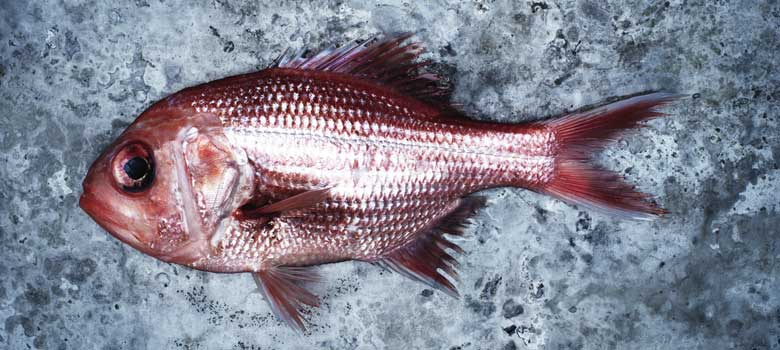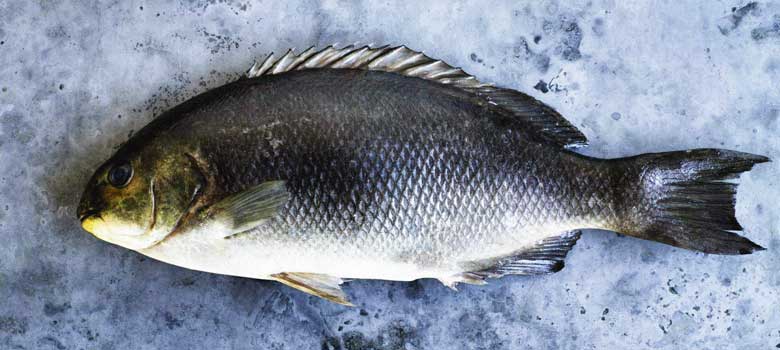
Food
The Future of Australian Seafood
When it comes to food and its links to our continuity on earth, seafood plays an essential part. Understanding the species we rely upon and the sustainability of each is critical to our future.
The role that the Australian seafood industry plays in our lives cannot be overstated. As food, fish, crustaceans, molluscs and invertebrates play a consequential part in our diet, delivering us functional dietary elements such as nutrients, proteins, amino acids, fibres, vitamins, and minerals that plants and land dwelling sources cannot.
Add to this the natural antidote that seafood provides in helping to avoid the onset of lifestyle-related diseases such obesity, diabetes, hypertension and hyperlipidaemia that are an unfortunate and increasing by-product of modern society, and the value of seafood in our future begins to dawn.
In Australia, seafood contributes just under $3.5 billion annually to our economy, employs 17,000 people and around 350Kt is commercially harvested each year. We consume just over 25kg per person, and this is moderate in comparison to the rest of the world, but when you consider our population size in relation to the vast geographic body of water under management and the pristine conditions of our well-managed fisheries, a bright picture for the future of our sea and seafood industry forms.

Luderick
Research and development have played a significant role in this picture and when it comes to reducing waste, emissions, by-catch and non-target impacts, disease control, processing and fisheries management, we are among the best in the world.
Australian chefs too, are among the best in the world when it comes to exploring cooking techniques that utilise parts of fish usually destined for the bin. With waste and sustainability in mind, chefs are applying skills, knowledge and creativity to add more value to the whole fish, not just the fillets. The leader of this vanguard is Josh Niland who, with his wife Julie, runs a fish-only restaurant, St Peter, in Sydney’s Paddington.
Josh takes a ‘nose-to-tail’ approach to seafood which is traditionally used to get the most out of meat and poultry. A few doors down from St Peter, Josh has also opened the world’s first fish butchery and his success in doing this has gained him world-wide renown. Now, his message and techniques are beginning to trickle down, permeating our dining scene.
Chefs all over the country are looking at seafood in a whole new way and adding great value to species of fish, crustaceans and molluscs that we may previously have ignored through lack of knowledge. The long term effect of this trend is that we are beginning to diversify our seafood choices, with ensuing benefits from both culinary and sustainability perspectives.
As part of Selector’s partnership with the Fisheries Research Development Corporation (FRDC), an industry and government body which, since 1991, has been keeping an eye on our seafood picture, we continue the exploration of species that represent amazing value and are highly sustainable - including the beloved prawn!
Sea Mullet
The humble Sea Mullet is a classic example of a highly underrated and undervalued species that is incredibly sustainable. Once considered bait, Sea Mullet is abundant and is wild caught in NSW, QLD and WA where the netting methods used have a low impact on habitat.
Highly regarded in Europe as part of the Mediterranean diet, Mullet has a strong, rich flavour and high oil content, making it incredibly versatile. Once scaled, the thick skin is perfect for crispy grilling to accompany simple fresh flavours like salads and citrus, however, the flavour is deep enough to handle marinating, stewing, smoking or baking.
We are also starting to see Mullet used to make pâte, dips and bottarga, which is a highly prized Sicilian inspired product made from dried mullet roe that is shaved onto pasta dishes.
Sea Mullet;Tiger Flathead
Tiger Flathead
Tiger Flathead are native to Australia and wild caught on the east coast from south QLD through to SA. The fish has a long history in Australia dating back to when the NSW Government imported three steam trawlers in 1915 and commercial trawling began. By 1929, 17 vessels were operating and targeting Tiger Flathead and stocks dipped, but over recent decades, careful management has ensured sustainable stocks.
Flathead are a superb, finely textured fish with clean, fresh flavours and very few bones, making it easy to prepare. The bones make great fish stock and the flesh can be eaten raw if dressed with citrus or roasted whole, barbecued or poached. The flesh is delicate and can be easily overcooked if grilled too hard, however, this fish is a universal favourite when battered and gently deep fried.
Bight Redfish
Bight Redfish is another popular Australian species inhabiting deeper water reefs across the bottom of the country from Bass Strait to southern WA and is a prized catch with offshore recreational anglers. Although a long-lived species, its fishing grounds are well monitored, managed and the numbers are sustainable.
Bight Redfish has a silvery-red colour with silvery white stripes and a delicate white flesh that is well suited for grilling, baking, shallow frying and roasting. The firm flesh of this fish makes it an ideal candidate for marinating and/or coating in spices and cooking over high heat.
Luderick
Like Mullet, Luderick is an abundant, readily available, low cost and delicious seafood. Luderick are primarily herbivorous fish, grazing on a variety of marine algae that gives them a distinct flavour that is influenced by their environment. Luderick has soft white flesh that has plenty of moisture, making it perfect for grilling, baking or barbecuing and is great for soups, stews and curries. Due to its diet, this fish can sometimes have a weedy flavour that can be avoided by removing the stomach before cooking.
Luderick are also a popular target species among a specialised group of recreational fishers who target them with light lines, floats, and baits of various marine algaes in estuaries, rock walls, and coastal headlands.
Blue Mackerel
Blue Mackerel is another species that is highly prized as part of the Mediterranean diet, but is undervalued here in Australia. Often used as bait, this highly sustainable and under-utilised species has a lot of potential. Like other mackerels, Blue Mackerel have a thin edible skin with a delicate but firm flesh and a high, healthy oil content that makes it incredibly versatile.
When fresh, Blue Mackerel is considered by chefs to be one of the tastiest fish in the sea and is best cooked simply, grilled skin down with oil on a barbecue. Its size and flesh structure also make it fantastic when fried, baked, poached, marinated or smoked.
Blue Mackerel;Pipi
Pipi
The Pipi is the undisputed hero clam of Australia and highly prized by chefs across the country for its delicate, sweet flavour and silky texture. Pipis are found on surf beaches from southern QLD to the mouth of the Murray River in SA. For well over 10,000 years, Pipis have been a staple of Indigenous people and whilst their popularity has moved across all Australian cultures, Pipis remain a sustainable and healthy choice today.
Generally, Pipis are best steamed or poached, with the liquid in the clam contributing great flavour as the shell opens up and the flesh cooks. When harvesting yourself, make sure you allow the Pipis to purge themselves of sand by placing them in salty water in a cool spot (not the fridge) for a few hours or overnight. If collecting your own Pipis, be sure to check your area’s fisheries regulations to ensure you’re doing the right thing while enjoying this special clam.